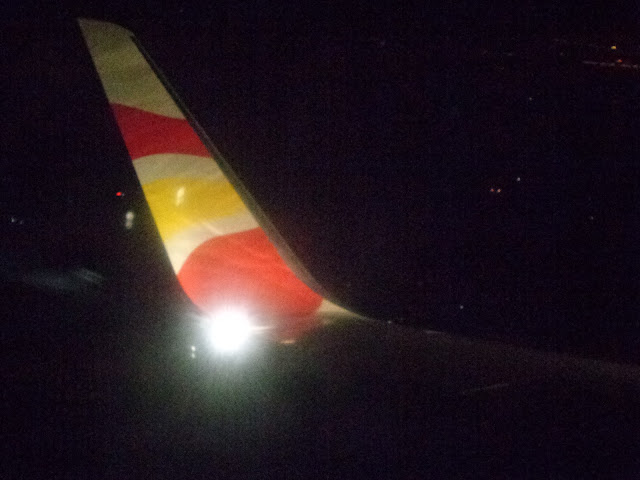Report by : Gan Yung Chyan
/ KUCINTA SETIA
Distributed to All Press & Travel Professionals
Fiji will welcome four Fiji Airways' direct flights from China during the Lunar New Year season in 2019. These flights will allow tourists from China to spend the New Year in Fiji enjoying the warmth and hospitality of the South Pacific.
Fiji Airways plans to launch charter flights to Tianjin and Hangzhou from Nadi in January and February 2019 using its Airbus A330 aircraft. The first charter flight arrives in Tianjin from Nadi on 31 January 2019 and departs for Nadi on the same day. The second charter flight from Tianjin takes off for Nadi on 6 February 2019.
Fiji Airways departs from Hangzhou for Nadi on 1 February and 7 February 2019.
Passengers onboard the charter flights include families with children and couples who will experience a variety of exciting activities in different parts of Fiji, including the Mamanuca Islands and the Coral Coast, Denarau (Dananu Island) and Nadi. From tasting delicacies and cava to learning about Fijian culture and appreciating Fiji's natural beauty, the visitors' travel experiences in Fiji will be enriched and enjoyable.
Vincent Zheng Jinrui, Director of the Greater China Region of Fiji Tourism Bureau, said, “We are very pleased to welcome four charter flights from two cities in China during the Spring Festival of 2019."
Mr. Zheng added, "February is the off-season of Fiji tourism. During the important period of the Spring Festival, the direct flight charter is undoubtedly an important measure. The 4 flights will serve about 1,100 Chinese tourists to Fiji. In comparison with 545 charter visitors last year, this number has more than doubled."
Fiji Airways launched charter flights from Nadi to Beijing Capital and Shanghai Pudong during the Chinese New Year holidays of 2017.
As usual, Fiji Tourism Bureau works closely with Fiji Airways, the various land associations and the Fiji tourism partners to provide full support for the four charter flights of Fiji Airways. It has planned to launch a series of promotional activities for consumers and peers, including marketing activities, public relations, marketing, and various activities and training for tourism workers in Fiji in order to welcome and serve groups of China tourists.
Currently, tourists from China have to transit in Hong Kong or Singapore for Fiji Airways' onward scheduled flights to Nadi.
/ KUCINTA SETIA
Distributed to All Press & Travel Professionals
Fiji will welcome four Fiji Airways' direct flights from China during the Lunar New Year season in 2019. These flights will allow tourists from China to spend the New Year in Fiji enjoying the warmth and hospitality of the South Pacific.
Fiji Airways plans to launch charter flights to Tianjin and Hangzhou from Nadi in January and February 2019 using its Airbus A330 aircraft. The first charter flight arrives in Tianjin from Nadi on 31 January 2019 and departs for Nadi on the same day. The second charter flight from Tianjin takes off for Nadi on 6 February 2019.
Fiji Airways departs from Hangzhou for Nadi on 1 February and 7 February 2019.
Passengers onboard the charter flights include families with children and couples who will experience a variety of exciting activities in different parts of Fiji, including the Mamanuca Islands and the Coral Coast, Denarau (Dananu Island) and Nadi. From tasting delicacies and cava to learning about Fijian culture and appreciating Fiji's natural beauty, the visitors' travel experiences in Fiji will be enriched and enjoyable.
Vincent Zheng Jinrui, Director of the Greater China Region of Fiji Tourism Bureau, said, “We are very pleased to welcome four charter flights from two cities in China during the Spring Festival of 2019."
Mr. Zheng added, "February is the off-season of Fiji tourism. During the important period of the Spring Festival, the direct flight charter is undoubtedly an important measure. The 4 flights will serve about 1,100 Chinese tourists to Fiji. In comparison with 545 charter visitors last year, this number has more than doubled."
Fiji Airways launched charter flights from Nadi to Beijing Capital and Shanghai Pudong during the Chinese New Year holidays of 2017.
As usual, Fiji Tourism Bureau works closely with Fiji Airways, the various land associations and the Fiji tourism partners to provide full support for the four charter flights of Fiji Airways. It has planned to launch a series of promotional activities for consumers and peers, including marketing activities, public relations, marketing, and various activities and training for tourism workers in Fiji in order to welcome and serve groups of China tourists.
Currently, tourists from China have to transit in Hong Kong or Singapore for Fiji Airways' onward scheduled flights to Nadi.





























